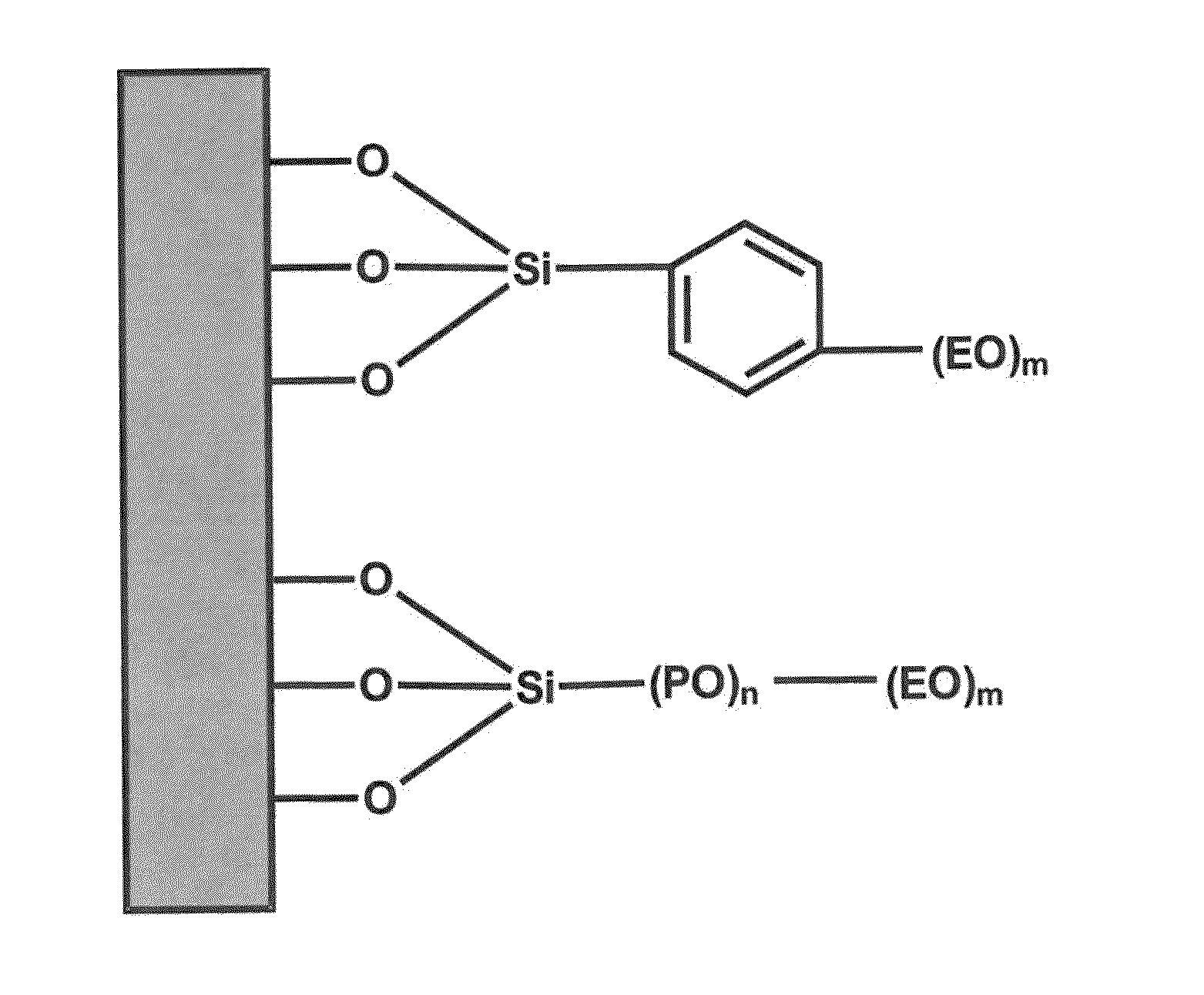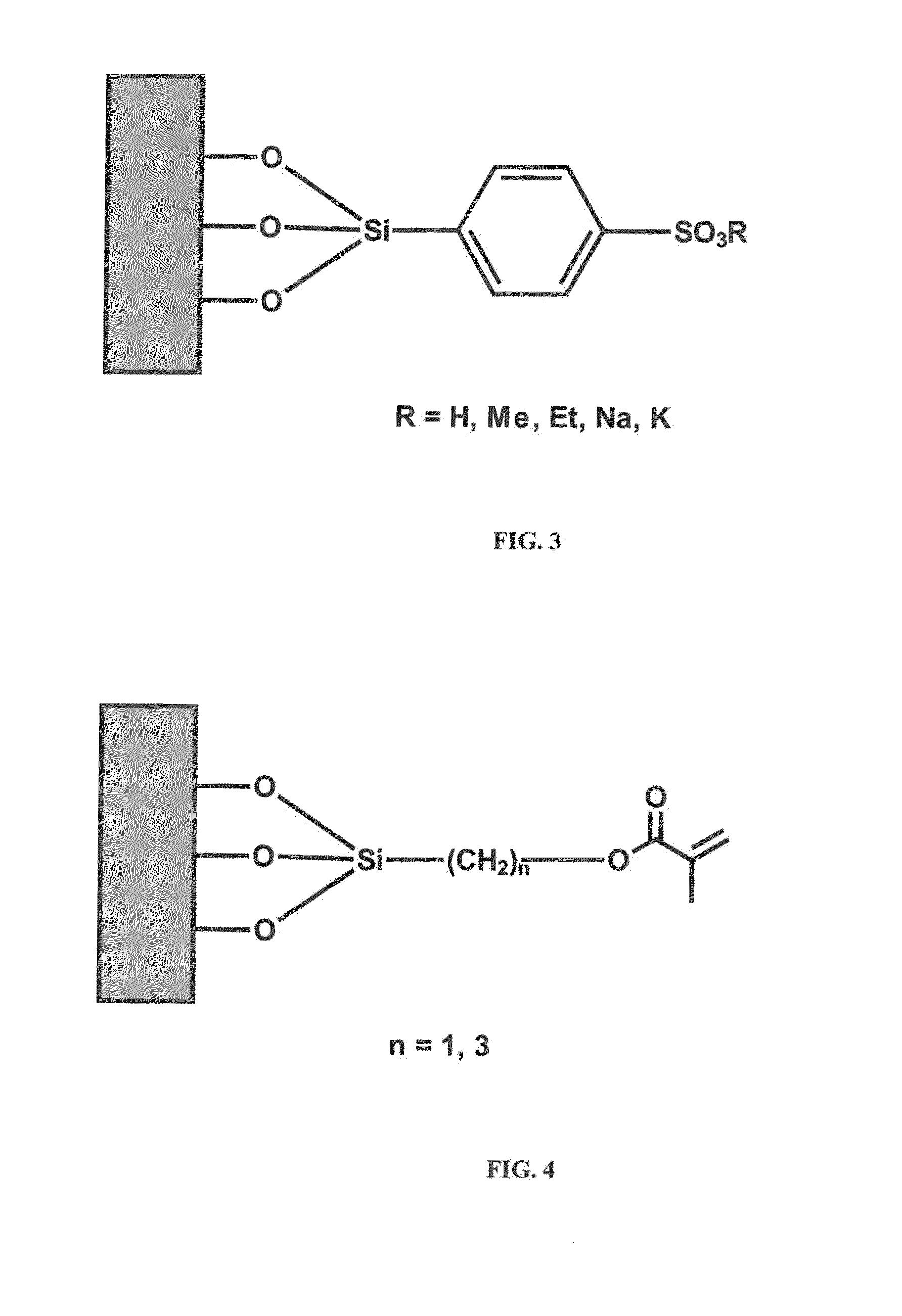Anti-fog coating
a technology of anti-fog coating and anti-misting, which is applied in the direction of instruments, optical elements, transportation and packaging, etc., can solve the problems of shortening the anti-misting effect or anti-fog effect, affecting the general propagation of light, and affecting the stability of optical components, etc., to achieve the effect of enhancing stability with respect to hydrolysis
- Summary
- Abstract
- Description
- Claims
- Application Information
AI Technical Summary
Benefits of technology
Problems solved by technology
Method used
Image
Examples
example 1
[0063]A polyethylene glycol (PEG) modified trichlorosilane (Mn˜500 g / mol) is dissolved in toluene so that a 5 mass% solution is obtained. A glass having an antireflective coating but no CleanCoat® is dipped into the solution and then air-dried. Any remaining over-coating is removed by rubbing with a dry cloth.
example 2
[0064]A polyethylene glycol (PEG) modified trichlorosilane (Mn˜500 g / mol) is dissolved in toluene so that a 2.5 mass% solution is obtained. A glass having an antireflective coating but no CleanCoat® is dipped into the solution and then air-dried. Any remaining over-coating is removed by rubbing with a dry cloth.
[0065]By covalently attaching the PEG-modified silane to the substrate surface, coatings are obtained in Examples 1 and 2 which provide anti-fogging properties. Due to the higher concentration of the PEG-modified silane, the anti-fogging effect provided in Example 1 is higher than in Example 2.
example 3
[0066]9.98 g 3-methacryloxypropyl trichlorosilane are dissolved in 490 ml toluene. A glass is stored in said solution for one hour and then air-dried. In a second step, the glass is dipped into a solution made of 5.0 g 2-hydroxyethyl methaerylate (HEMA), 1.0 g trimethylol propanetriacrylate (TMPTA) and 0.5 g diphenyl-(2,4,6-trimethylbenzoyl) phosphine oxide in 50 ml toluene, followed by curing with a Panacol UV-D-1000 lamp.
PUM
| Property | Measurement | Unit |
|---|---|---|
| Thickness | aaaaa | aaaaa |
| Hydrophilicity | aaaaa | aaaaa |
Abstract
Description
Claims
Application Information
 Login to View More
Login to View More - R&D
- Intellectual Property
- Life Sciences
- Materials
- Tech Scout
- Unparalleled Data Quality
- Higher Quality Content
- 60% Fewer Hallucinations
Browse by: Latest US Patents, China's latest patents, Technical Efficacy Thesaurus, Application Domain, Technology Topic, Popular Technical Reports.
© 2025 PatSnap. All rights reserved.Legal|Privacy policy|Modern Slavery Act Transparency Statement|Sitemap|About US| Contact US: help@patsnap.com



